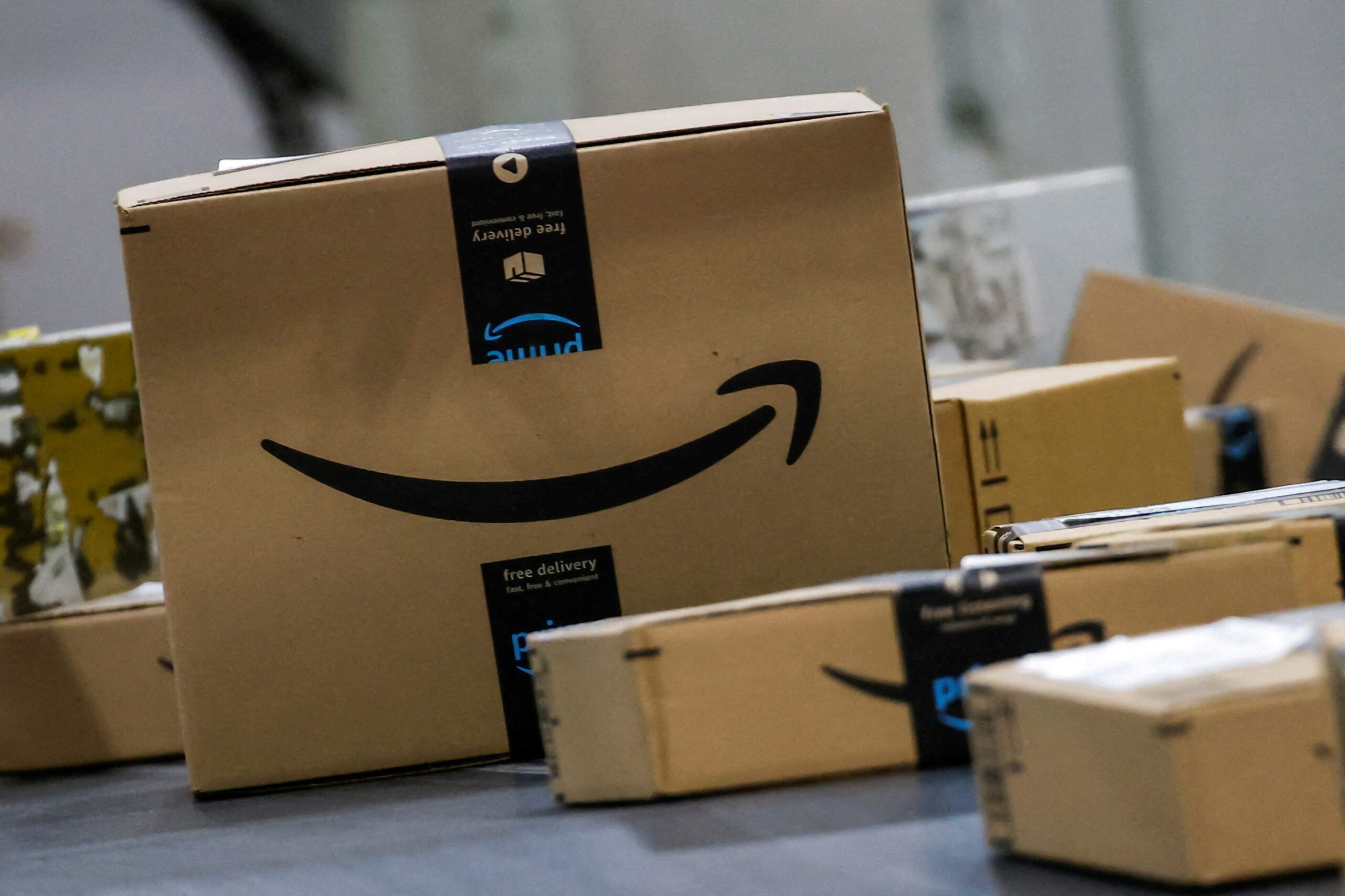
Amazon Navigates Tariff Turmoil: Strategies and Uncertainties
Amazon is grappling with the repercussions of the Trump administration’s tariffs, a situation that has cast a shadow over its e-commerce operations and profitability. While the company is taking proactive steps to mitigate the impact, the long-term outlook remains uncertain, posing challenges for both Amazon and its third-party sellers.
The tariffs, primarily imposed on imports from China, have disrupted supply chains and increased costs for a wide range of companies, including Amazon, Walmart, and Apple. In response, Amazon has been working to reassure investors and implement strategies to minimize the negative effects on its business.
During an investor call following the release of the company’s earnings report, CEO Andy Jassy emphasized that Amazon has not yet witnessed a significant decline in demand or a substantial increase in the average selling prices of retail items. He also noted that there has been heightened purchasing activity in certain categories, suggesting that consumers may be stocking up in anticipation of potential price hikes.
One of the key strategies Amazon is employing is to encourage its third-party sellers to move orders to the United States earlier, thereby avoiding the imposition of tariffs on merchandise. Jassy explained that many sellers have already taken steps to build up their inventory in the U.S., which Amazon is encouraging to keep prices as low as possible.
However, analysts caution that this stockpiling approach is merely a temporary fix. As consumers increase their purchases to avoid tariff-related price increases, Amazon and its sellers may struggle to maintain stable prices in the coming months as they deplete their existing inventory and place new orders.
Gil Luria, an analyst at D.A. Davidson, expressed skepticism about the effectiveness of stockpiling, stating that it is unlikely that sellers have accumulated more than six months’ worth of inventory. He warned that if the current uncertainty persists, Amazon may have to resort to less palatable measures, such as allowing higher prices to flow through to consumers, accepting lower margins, or pushing its merchants to absorb the reduced profitability.
The impact of tariffs extends beyond Amazon, affecting other major players in the tech industry, including Apple, Qualcomm, Samsung, and Intel. These companies, which are heavily reliant on global supply chains and exposed to everyday consumers, face the risk of being set back in their competition against rivals like Microsoft and Google.
Apple CEO Tim Cook has outlined significant changes to the company’s supply chain in response to the tariffs, estimating that they could add approximately $900 million in costs for the quarter ending in June if rates remain unchanged.
While Amazon’s AWS cloud business has traditionally served as a buffer against fluctuations in its e-commerce operations, its performance in the first quarter fell short of expectations. This disappointment was amplified by the strong performance of Microsoft’s Azure cloud business, which surpassed expectations.
Investors had high hopes for the cloud businesses, fueled by the positive results of Microsoft and Google, which in turn raised expectations for Amazon’s AWS. Despite the underwhelming performance in the first quarter, analysts remain optimistic about the long-term prospects of AWS, recognizing its continued growth and overall strength.
In addition to the broad tariffs on Chinese imports, Amazon faces another challenge in the form of the impending end of de minimis, a trade exemption that allows low-cost merchandise shipped directly to shoppers to enter the U.S. duty-free. The termination of this exemption on May 2 is expected to significantly impact some of Amazon’s third-party sellers and its Haul business, which ships a substantial portion of its merchandise from China.
The effects of these challenges are already becoming apparent. Some sellers are reportedly planning to forgo participation in major sales events such as Amazon Prime Day in July. Additionally, the growth in revenue from Amazon’s third-party seller services slowed considerably in the first quarter, falling to 7% excluding the impact of foreign exchange. Third-party seller services account for approximately one-quarter of Amazon’s total revenue.
While Amazon has projected overall second-quarter sales above Wall Street estimates, its outlook for core profitability has fallen short, raising concerns about the company’s ability to maintain its profit margins in the face of rising costs.
Amazon has not disclosed any specific measures it is taking to help its sellers mitigate the impact of tariffs, nor has it indicated whether it will absorb any of the increased costs itself. The lack of transparency on this front has fueled speculation about the potential consequences for both Amazon and its third-party sellers.
Bob O’Donnell, president and chief analyst at TECHnalysis Research, believes that the worst effects of the tariffs will be felt in the third and fourth quarters of the year. He suggests that companies are currently adopting a short-term approach because they lack clarity about the future and are unsure of how to proceed.
In conclusion, Amazon is navigating a complex and uncertain landscape as it grapples with the impact of tariffs. While the company is implementing strategies to mitigate the negative effects, the long-term outlook remains unclear. The success of Amazon’s efforts will depend on its ability to adapt to the changing trade environment, manage costs effectively, and maintain its competitive edge in the face of growing challenges. The company’s actions in the coming months will be crucial in determining its future trajectory and its ability to thrive in a tariff-laden world.
The impact will be felt across the board, impacting consumers in the form of potentially higher prices, sellers in the form of decreased margins and potential removal from the platform, and Amazon, in the form of decreased revenue and an uncertain future.
